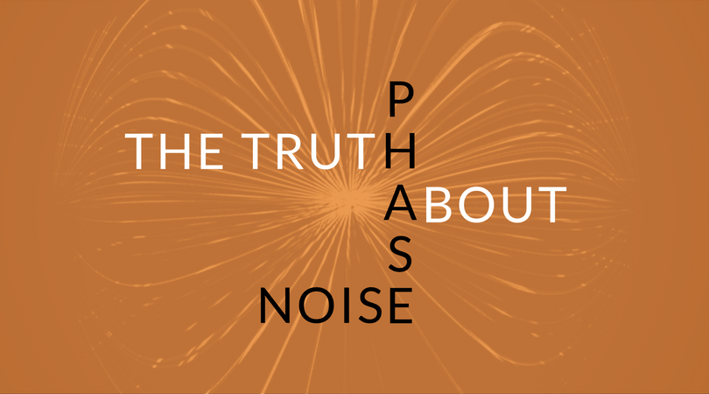
One of the most important criteria in determining how well an oscillator performs in a given application is phase noise. It is a somewhat esoteric concept that is not well understood outside of the engineering world, but it affects many of the RF technologies we take advantage of every day, including Wi-Fi and mobile phones, as well as more complex applications like avionics, radar, military communication systems and electronic warfare.
Of course, not everyone who requires sophisticated RF solutions has time to go to engineering school and gain an academic understanding of the topic, so we’ve put together this guide to help you understand the truth about phase noise, and make informed purchasing decisions for your projects and clients.
What is Phase Noise and Why Should You Care About It?
There are several ways that RF engineers can represent how stable an oscillator is, and thus, how effective the signal generator it contains is. One way to do this is to measure the “phase noise”, a term which refers to the representation in the frequency domain of random, short-term phase fluctuations in the waveform of an electronic signal. These take the form of noise spectrum “sidebands” on both sides of the carrier. When this data is represented in the time domain, it is called “phase jitter”.
The reason why phase noise is measured is because it reflects how effectively the system using that signal will perform. How phase noise manifests itself will depend upon the system and the purpose for which the signal is being used. In a radar system, for example, phase noise could show itself as a lack of sensitivity and false detections. In medical imaging technologies, such as MRI, phase noise could result in poor clarity and definition in the images. Phase noise is important to be aware of because it affects the overall quality of the signal. The more noise, the poorer performance you can expect.
For a quick reference guide on phase noise, check out this handy infographic we’ve put together.
What Causes Phase Noise?
There are a number of different factors which can affect the vibration of oscillators, creating phase noise. One of these is temperature. Ambient temperatures can affect the vibration of the crystal oscillators, resulting in “thermal noise” in the signal. This is the reason why oven-controlled designs were developed.
Another type of phase noise is “flicker noise” which is common in most electronic devices and is associated with changes in direct current (DC) flow. It has a distinct 1/f spectral power density (also known as “pink noise”).
Shot noise is linked to the “discrete nature of electron charges” and is triggered by fluctuations in electrical current.
Finally, with crystal oscillators, phase noise can be caused by “crystal aging”, which occurs when a crystal’s frequency changes over time due to contaminants leaving the crystal (positive aging) or contaminants accumulating within the crystal (negative aging). Either way, the result is an altered vibration, and a noisy signal.
Phase Noise and Specific Applications
One important and often overlooked fact about phase noise is that it affects some applications much more than others. With Local Area Networks (LAN) for instance, you do not need to concern yourself much with phase noise. For applications like radar systems and position navigation timing, however, phase noise can cause a lot of problems, and significantly affect system performance.
It also matters whether the signal noise happens in the lower or higher frequency ranges. On medical imaging systems, there must be low phase noise at all frequencies. With other applications, it depends. If you’re dealing with a high-frequency source, it is much more important that there be less phase noise at higher frequencies than lower ones. With low-frequency sources, it’s vice versa.
Depending on the specific application, it can be easier or harder to reduce phase noise. It’s a lot harder to reduce phase noise in radar signals than in telecommunications systems, for instance.
What is the Solution?
The bottom line is that phase noise can be a problem for any radio frequency application. What you can do, however, is pick the highest quality oscillators to reduce noise from your signal as much as possible. Bliley has been leading the way in crystal oscillator design and innovation for decades, and we’re poised to continue that tradition during the exciting changes in the industry that are coming in the near future. We craft the highest quality crystal oscillators to ensure the lowest possible phase noise and send strong, clear signals for all our clients. Send us a quick message and put our 85 years of expertise to work for you.






